THE BIG RESTORATION
Sam Ibbotson’s fastidious Mini revival, all done in a single garage
WORDS MATT TOMKINS PICTURES MATT HOWELL
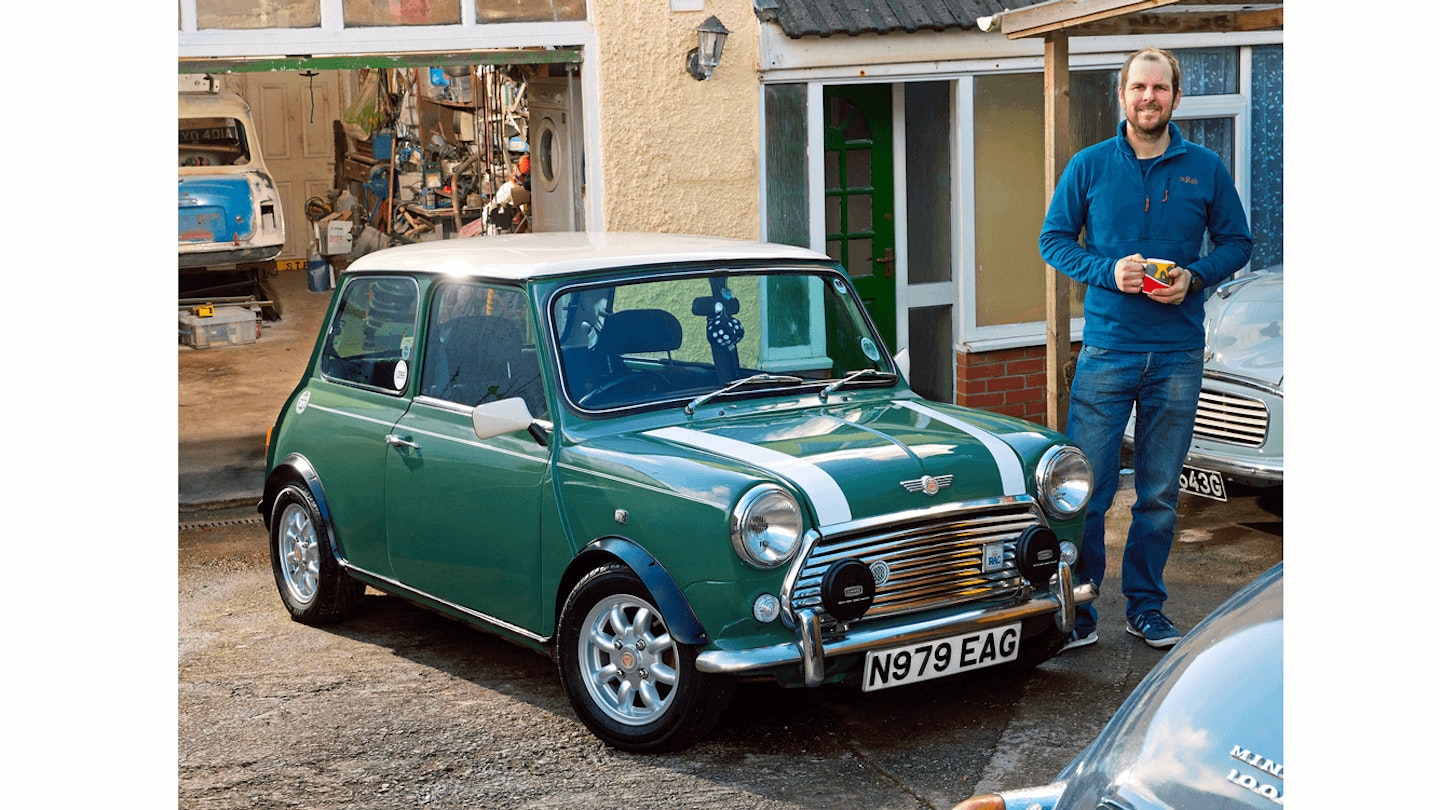
THE RESTRORER Son of PC contributor Andy Ibbotson, it’s clear that Sam was bitten by the classic bug early. He currently owns 10 classics and is very much a ‘project person’. His day job is in facilities management for the MOD.
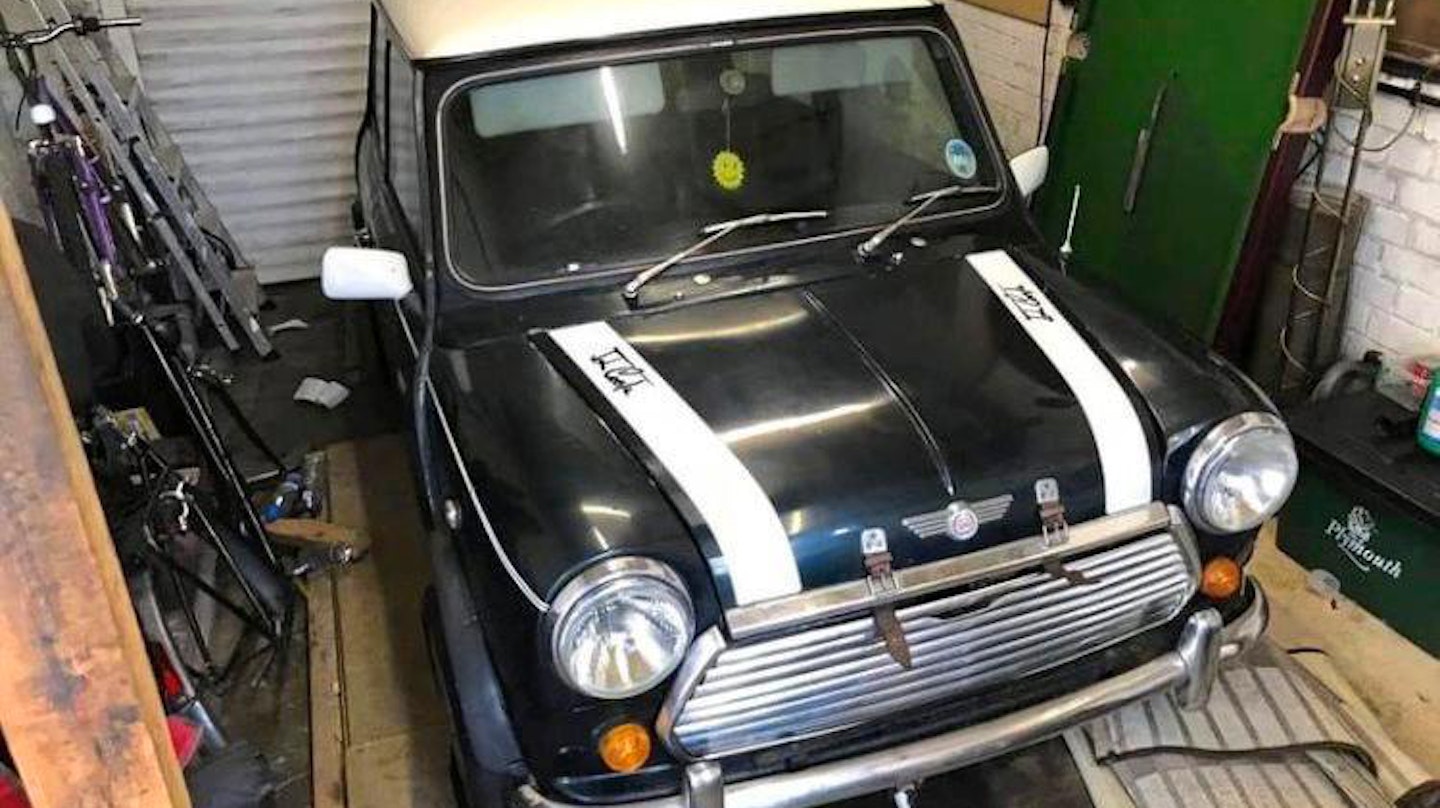
AS FOUND Sam made the age-old mistake of buying the Mini from within a dark garage. ‘It looked OK in there’, he says.
In this job we’re blessed to be introduced to some fantastic people. Bona fide enthusiasts, lunatics if you will, who pour thousands of hours and an even larger number of pounds into reviving wrecks, otherwise destined for the scrapyard.
It’s a multi-billion-pound industry, but in the cold, Cornish winter air, stood chatting to one such restorer, it’s obviously so much more than that. I first met Sam Ibbotson some years ago on the hallowed fields of the Beaulieu Autojumble. He and his dad, Andy – now a PC contributor himself – had come to the PC stand to chat all things Mini and Morris Minor. It was immediately clear that these were a pair who were badly afflicted.
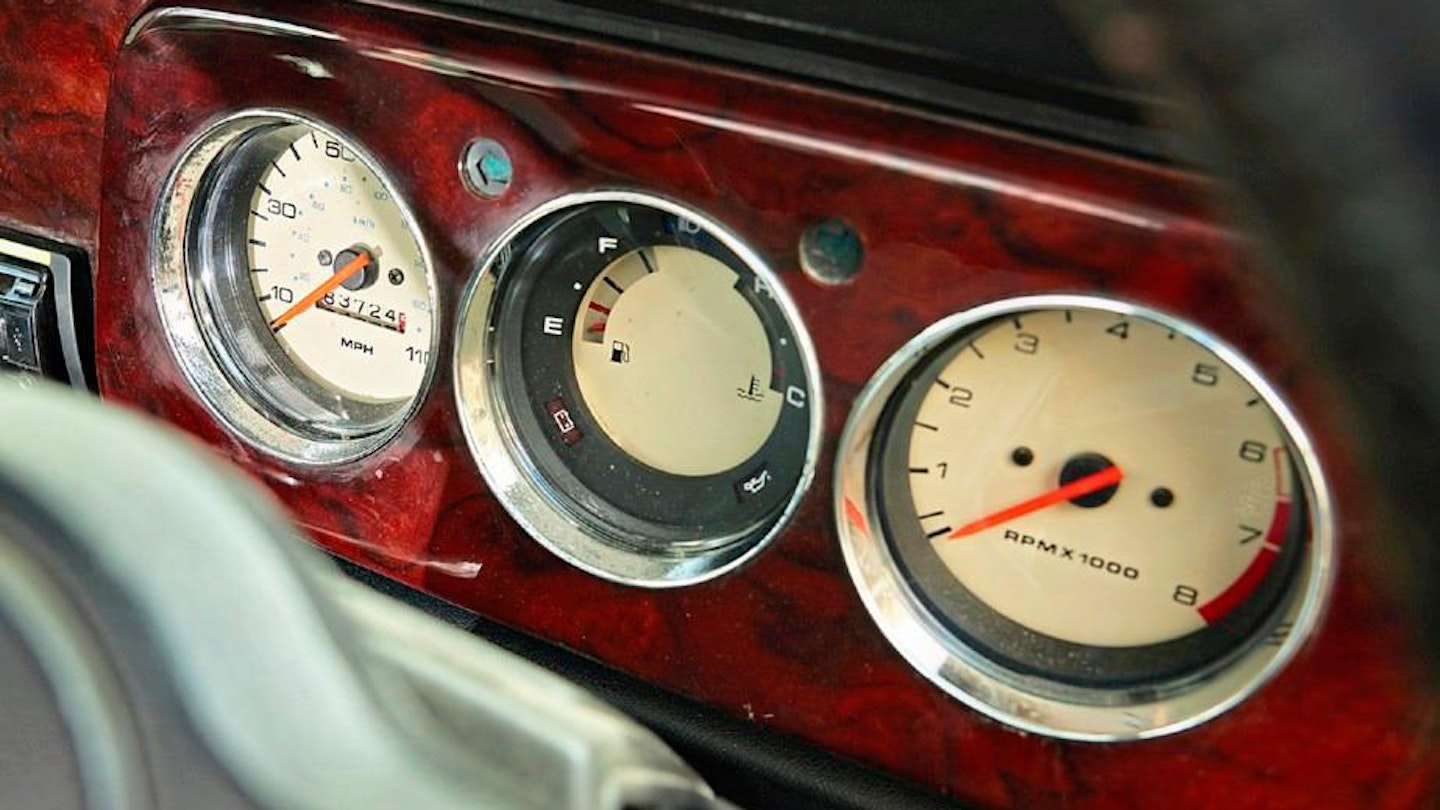
Later dash: no central clock.
The Mini sat before us today, a 1995 Cooper 1.3i, is testament not only to Sam’s immense skills but also his unwavering willingness to learn ‘on the job’. ‘I always wanted a Mini’ says Sam, ‘But dad bought me an Austin 1300 as my first car instead – being an ungrateful teenager, that soon went, and I bought my first Mini (a Sprite SPI) not long after.’ Sam had to sell that Mini when he went to university, but it wasn’t long before its place was taken by a split-screen Morris Minor – that’s where the tinkering started. ‘With the SPI Minis, things seem to work pretty well. They don’t need constant tweaking and tinkering like a carburettor-fed car, so it wasn’t until I was driving the Minor that I had to really roll my sleeves up and learn.’ A previous Cooper taught Sam bodywork skills, requiring a replacement door skin among other things, but when this one came along, it was a different challenge entirely. ‘I made the cardinal error of viewing it in a dark garage, not in the daylight’, confesses Sam. ‘In hindsight, I probably shouldn’t have bought it, but here we are!’ It was a non-runner at point of purchase – which really should have been the easy bit. ‘I didn’t think that would be too much of a problem, we had lots of bits laying around and previous experience with Minis and Minors, which share the A-series engine and ancillaries, and the bodywork didn’t look too bad.’ Unfortunately for Sam ‘It had been bodged quite well’. But we’ll get on to that. The first job was to try and get it running.
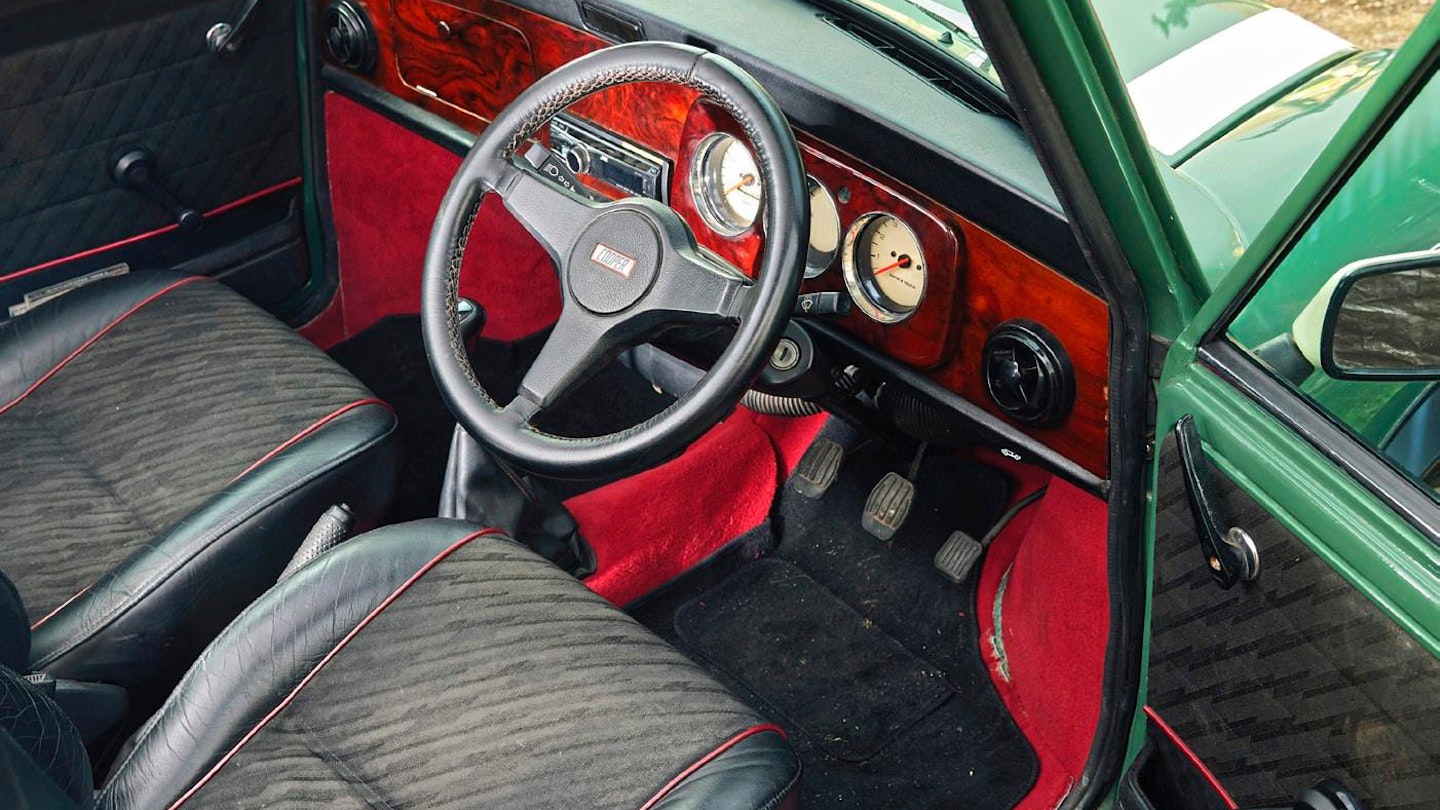
Plenty of sound deadening lays beneath the carpet.
Plan of action
The plan was that Sam and his dad, Andy, would take a week offtogether, get the car running and driving, patch up a few holes and avoid the need for a full strip down and restoration for at least the short term. That wasn’t to be. ‘When we started to strip it down, we realised that the previous owner had used it as a first foray into the world of tinkering. The cooling system was brimmed with fresh engine oil, the tricksy SPI unit had been inexpertly messed with and numerous welding repairs had been finished off with duct tape underneath paint and sealant.
It was a catalogue of issues.’ The chaps looked at each other with raised eyebrows, as the mounting list of ‘while we’re here’ jobs increased. It became obvious very quickly that this was going to be more than a week’s work. Sills, inner A-panels, door skins, rear valance, boot floor, front wings… a full restoration beckoned.
‘The previous owner had used the car as a first foray into the world of tinkering’
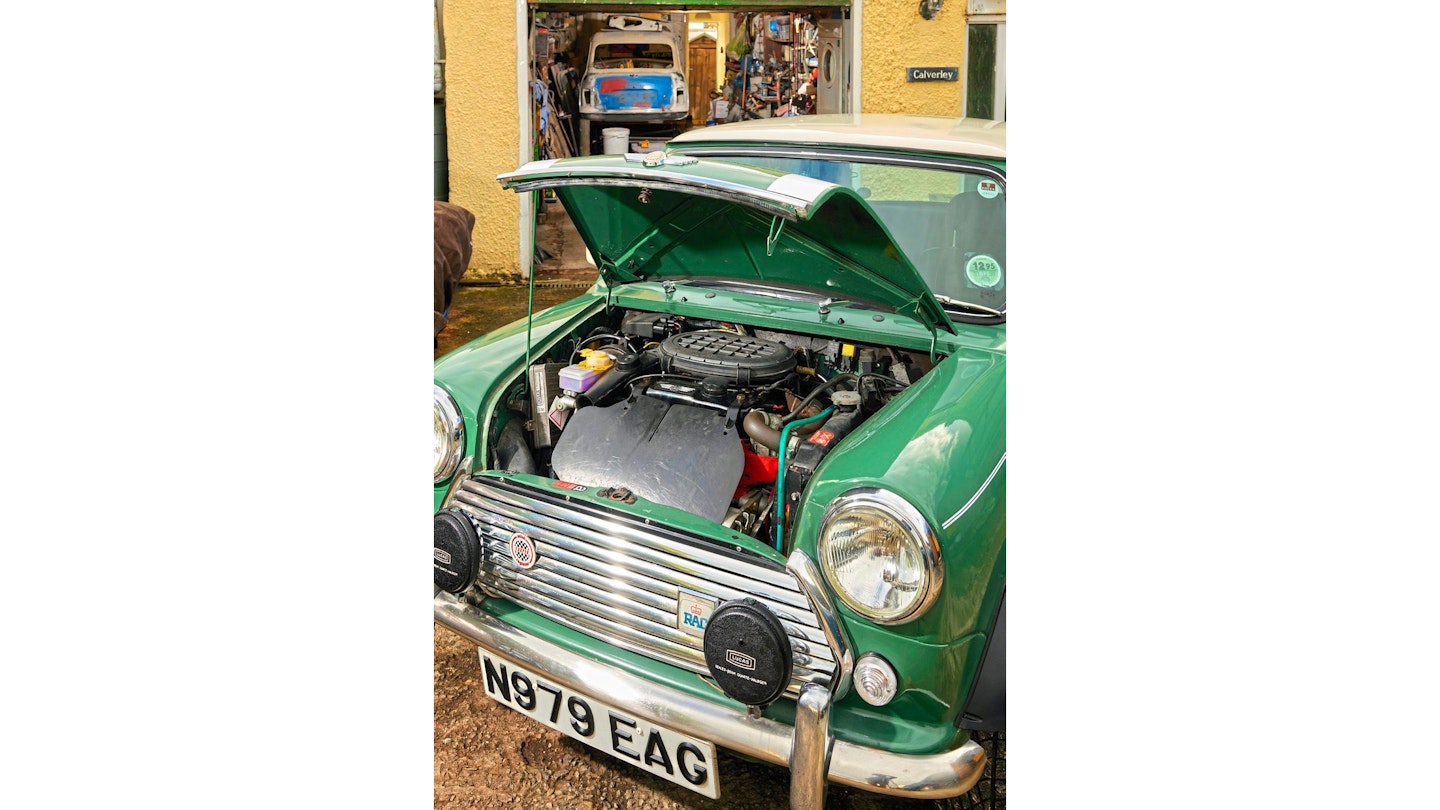
A packed bay that demonstrates the Mini’s extraordinary evolution.
Panel problems
Plenty of ‘normal Mini welding’ followed. ‘The biggest bugbear was with the fit of pattern panels’ sighs Sam. ‘The scuttle panel we bought was particularly bad – whatever I did with the bonnet adjustment, it simply wouldn’t sit right at the back, even if drawn forward to the point where it was causing issues at the front. A Heritage panel saved the day, so that was lesson number one: buy once, buy right.’ Factory spot welds were studiously drilled out before replacement panels were plug welded in their place with the MIG welder, while seam welded repairs were undertaken where full panels were deemed unnecessary. New door skins replaced rotten originals before finally, oh finally, he was left with a straight and solid shell ready for paint. Sounds easy if you say it quickly, doesn’t it?
Prep and paint of the bare shell followed, all carried out by Sam in Andy’s single garage. The colour, Almond Green, isn’t original for the car, which was originally supplied in metallic British Racing Green, but Sam’s deviation from original specification wasn’t without good reason. ‘I had never sprayed metallic and, given that I would be painting it in the garage – somewhere we’ve had problem with silicones in the paint before – I didn’t want to have the added complications of panel orientation that come with spraying metallics. Besides, this is a car I built to use, I wanted to be able to touch it up should the need arise, which is far easier with a flat colour. I didn’t want to be scared to use it.’ Sam continues ‘There are actually two shades of Almond Green, a Sixties one and a Nineties one – this is the latter and was applied to some special edition Minis in 1995 anyway.’
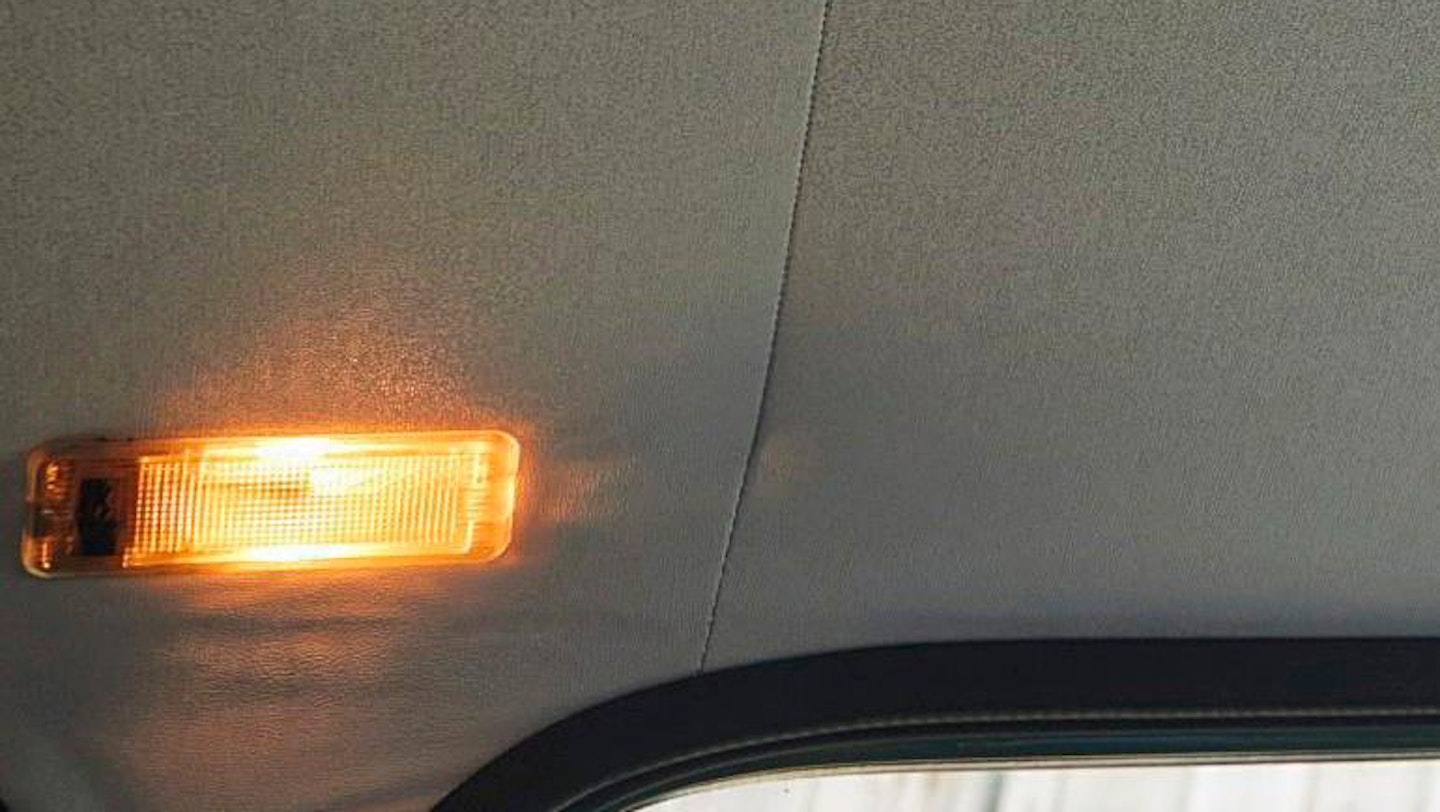
Headlining was particularly tricky, but Sam got there in the end.
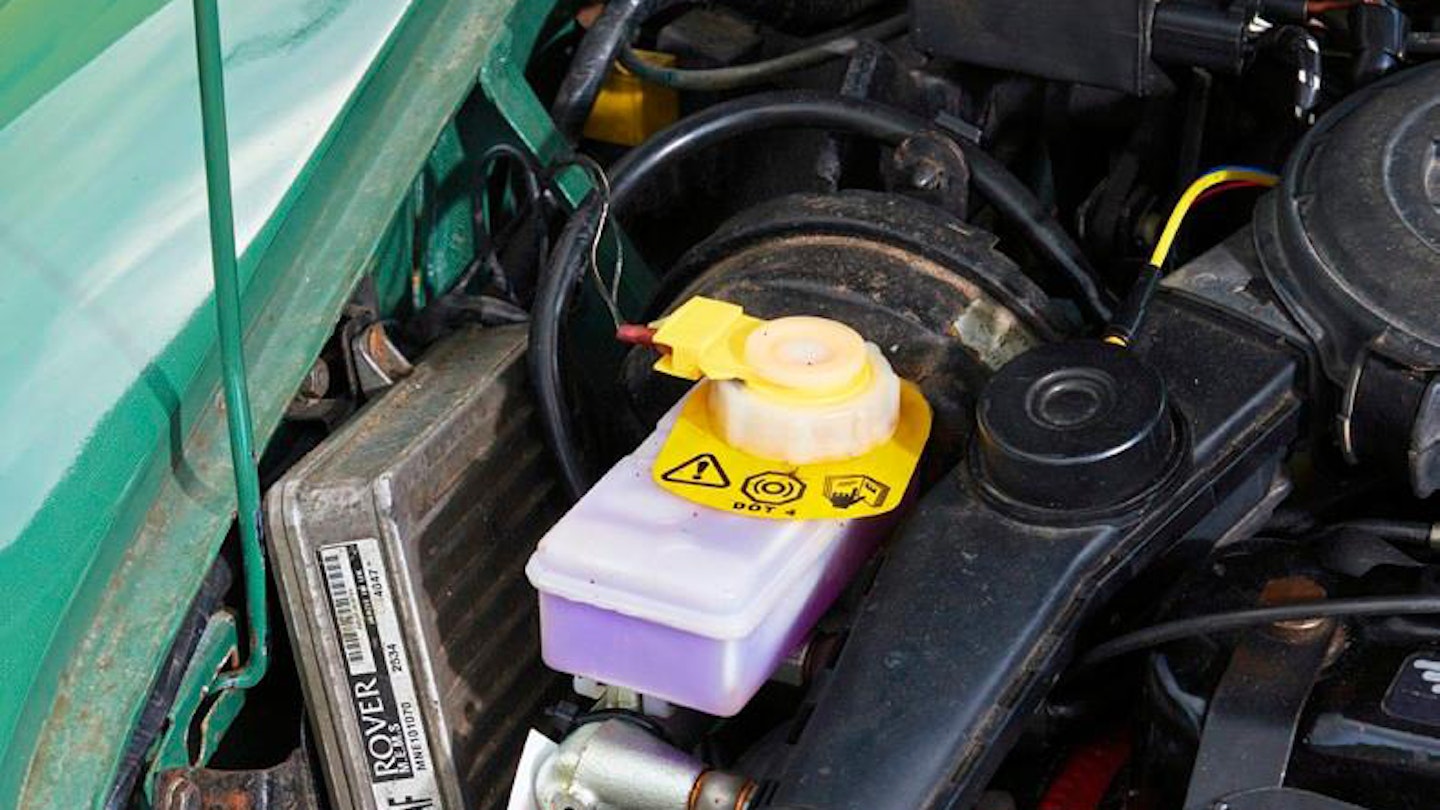
Silicone brake fluid should ensure system longevity.
The heart of the matter
Mechanical work continued apace alongside the bodywork, the Cooper’s 1275cc heart receiving a rebore, fresh pistons, a crank grind, new shells, camshaft bearings and suchlike while the original subframes received meticulous repairs, fresh bushes and bearings where required - a previous owner having already thrown a significant amount of money on upgrades such as Hi-Lows and Spax dampers. While the engine was apart, the gearbox went away and was replaced by a reconditioned unit – but as Sam reports, that was not smooth sailing. ‘When I got the car all back together, it was immediately obvious that something was wrong with the ’box. On the first test-drive, it jumped out of top gear, and under load in both first and reverse a horrendous screech filled the cabin and oil coated the floor’.
Out it came and back to the specialist it was shipped. Multiple phone calls later, the ’box was back again, and Sam refitted it and the engine to the car, taking great care not to damage the fresh paint. Problems again and out it came. Eventually, after nearly 18 months of frustration, another new ’box now sits below the engine block and each ratio now engages with the ease one would expect. A huge relief for Sam, I can tell.
Aside from the frustrations with the gearbox, Sam reveals the single point injection (SPI) system to have been an unexpected source of complication. ‘You simply can’t get many of the SPI-specific parts new’, he laments. ‘When I first stripped the car down, I snapped an injector rail pipe, which had seized in the union, but simply assumed I would be able to replace it with another off the shelf.’ Unfortunately, this would prove not to be the case, so much hunting for secondhand parts followed. ‘I now have a good stock of secondhand SPI parts, so should be well-positioned to keep the system in good fettle into the future. Thankfully, Mini Spares is now reproducing all the required vacuum hoses for the SPI – these are a common trouble spot, so I replaced all of mine as a matter of course.’ Once back on the road, there remained some fettling to do – one stepper motor, some careful adjustment of the idle control module and a partially broken wire from the oxygen sensor, which had been causing intermittent non-starting replaced, the engine is now finally running as it should.
It's not been a project without its challenges, then, which could easily have pushed other restorers to the limit and beyond. But the finished result before us is a true demonstration of what can be achieved with focus, dedication and skill. Despite inevitable calls on his time from an ever-growing fleet, Sam has managed to ensure the Mini a level of finish befitting of the groundwork he put in to it. It’s a car that drives and feels just as good as it looks, and one of which Sam should be extremely proud.
‘On the first test drive, it jumped out of top gear, with a horrible screech’
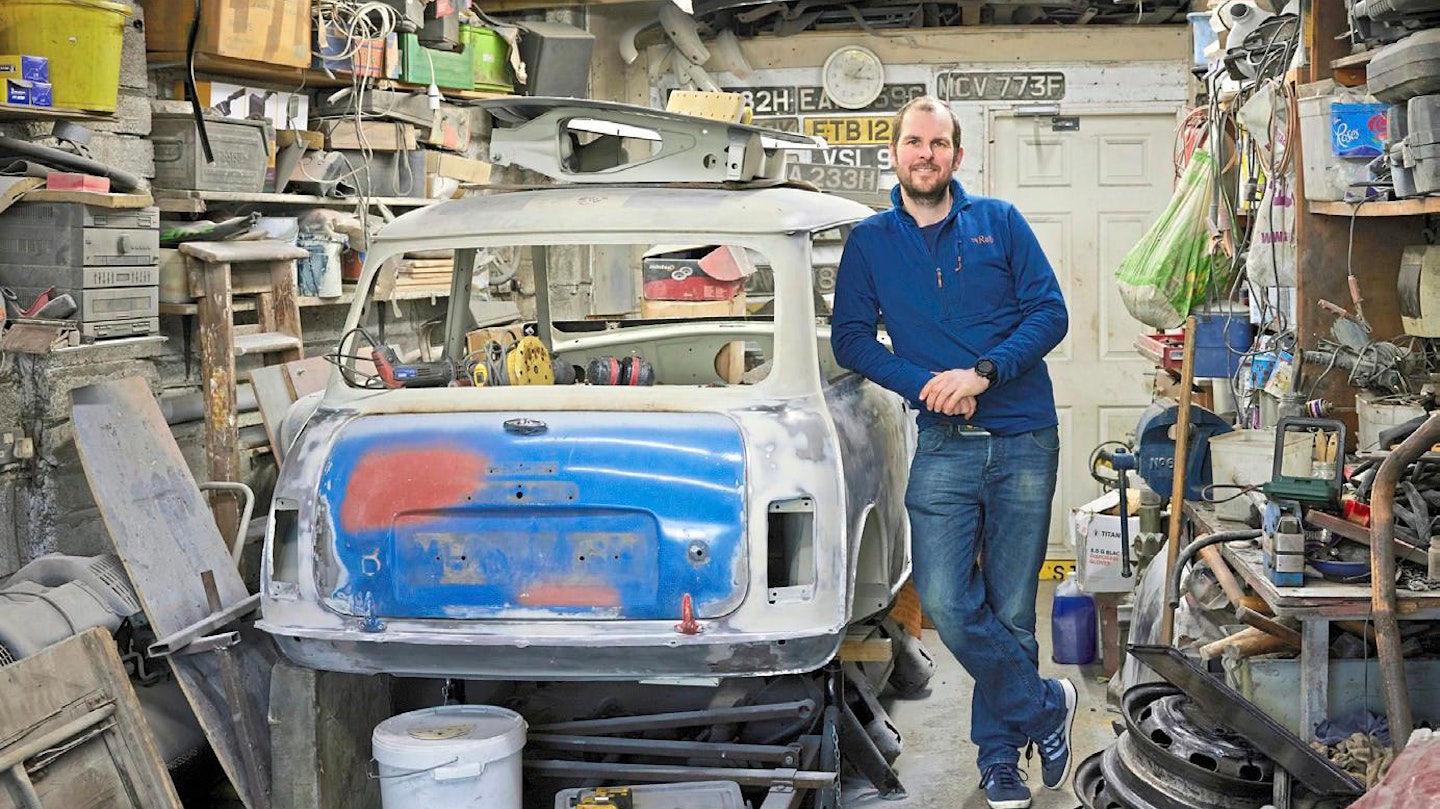
Sam’s next project, a Clubman, to which he’ll apply all learnings from the Cooper.
Here’s how Sam did it…

1 DECEMBER 2019 - Strip down
When the car arrived home, Sam realised he could see daylight from behind the dash. Then things escalated…
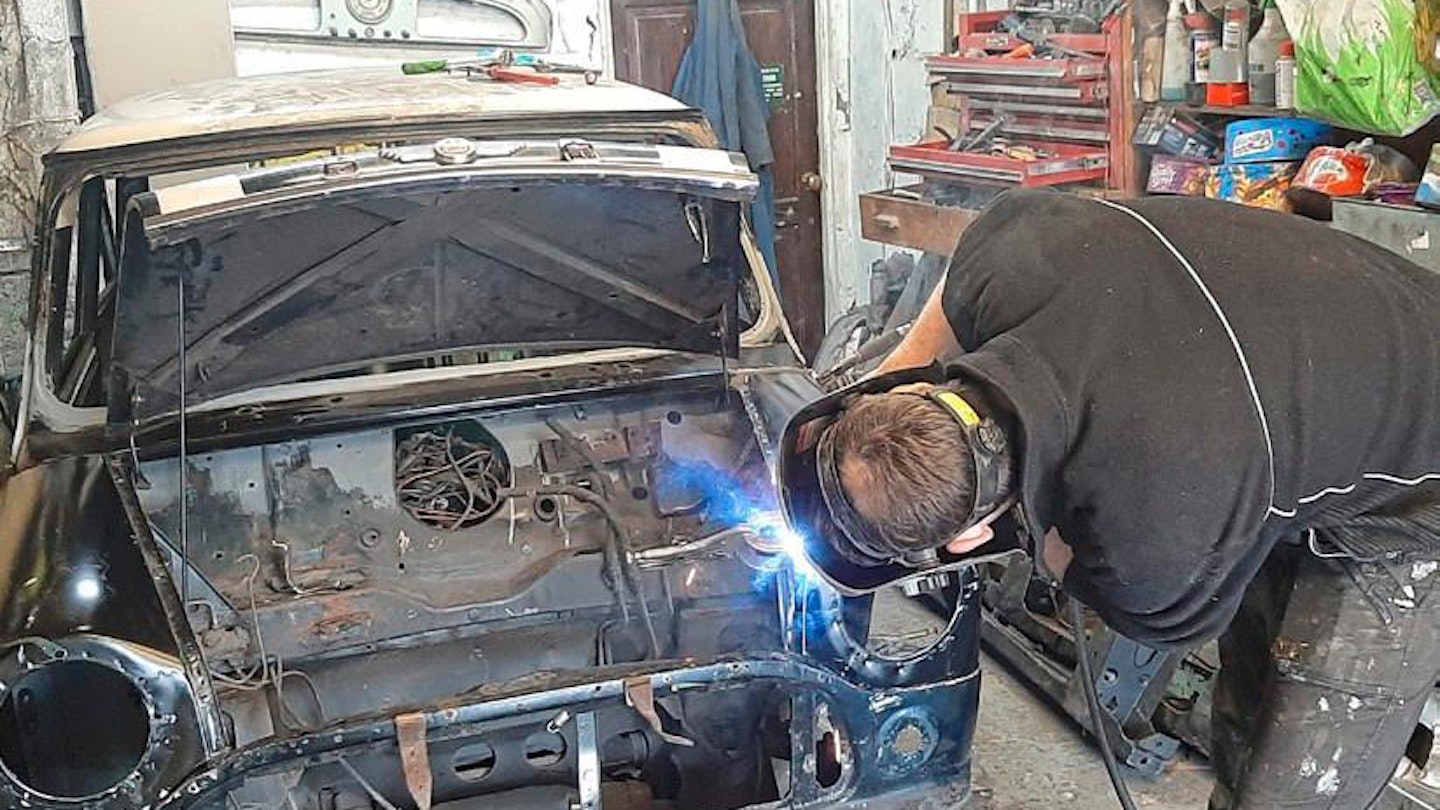
2 MARCH 2020 - Weld on
Afresh pair of front wings are plug welded into place.
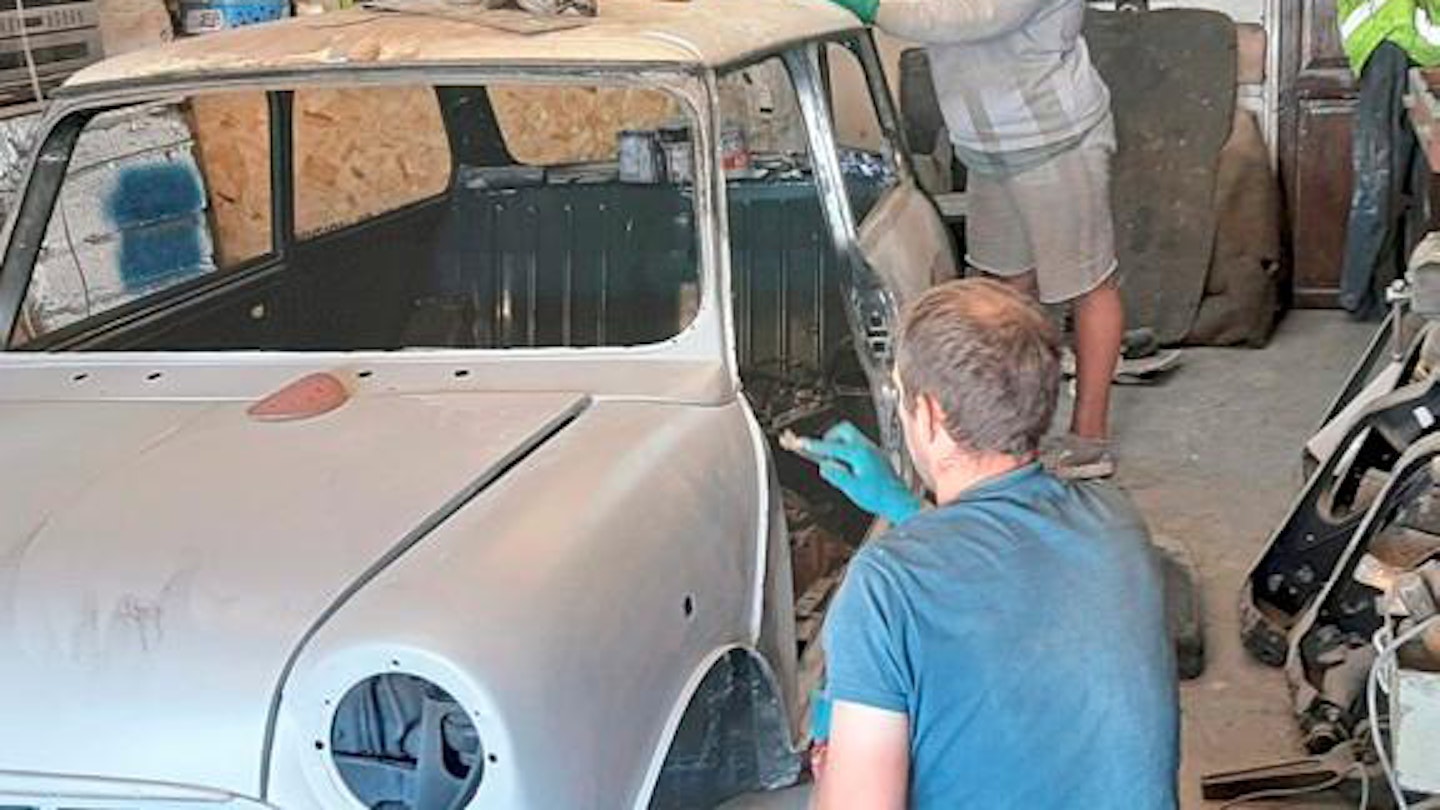
3 MAY 2020 - Prime time
High-build primer applied, Sam and partner Danny get to work with countless hours of filling and flatting.

4 SEPTEMBER 2020 - Paint it green
With the garage decked with sheets, Sam applied the top coats of Almond Green himself.
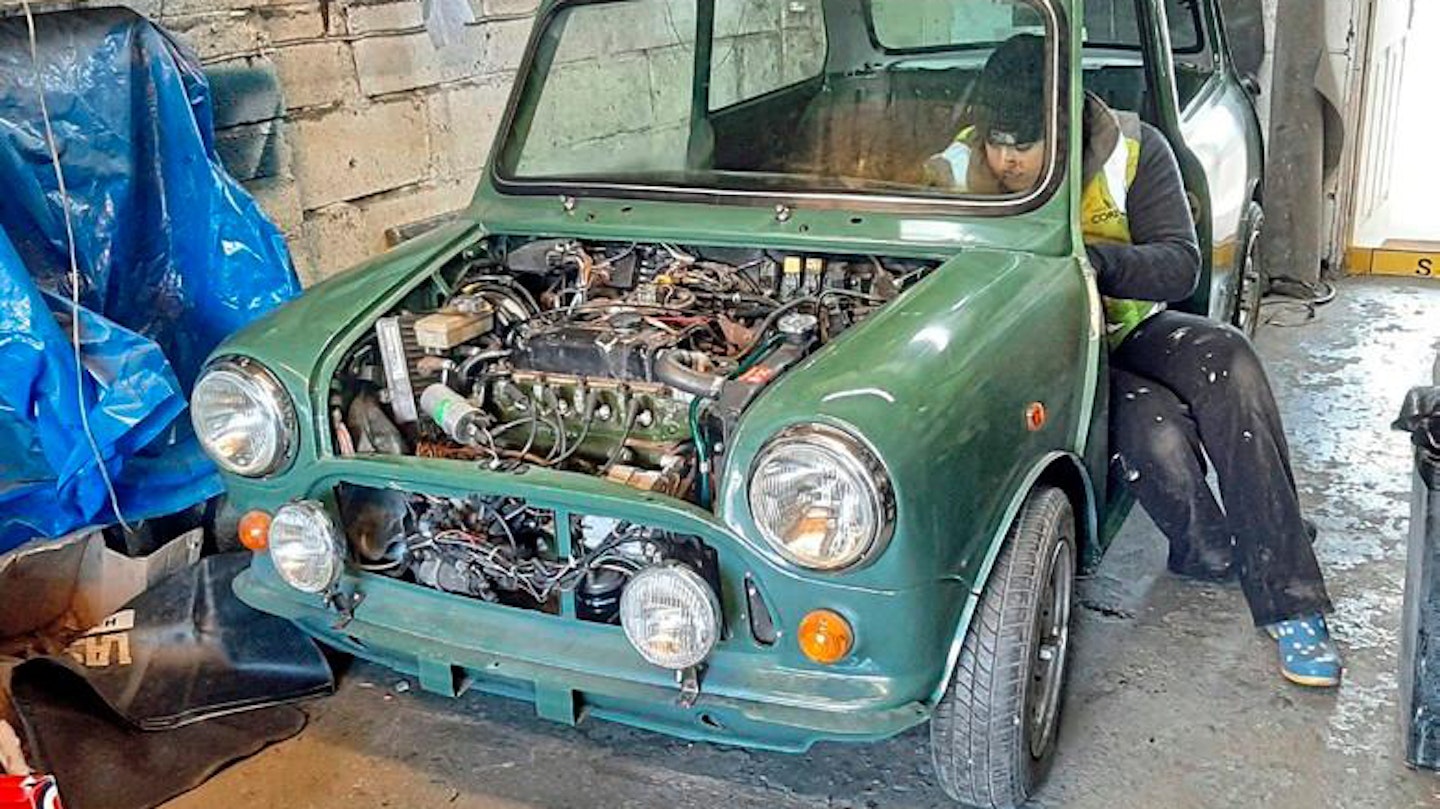
5 MARCH 2021 - Big build
With the shell resplendent in its colour coats, the car ‘just’ needed putting back together, every single part having been refurbished or replaced.
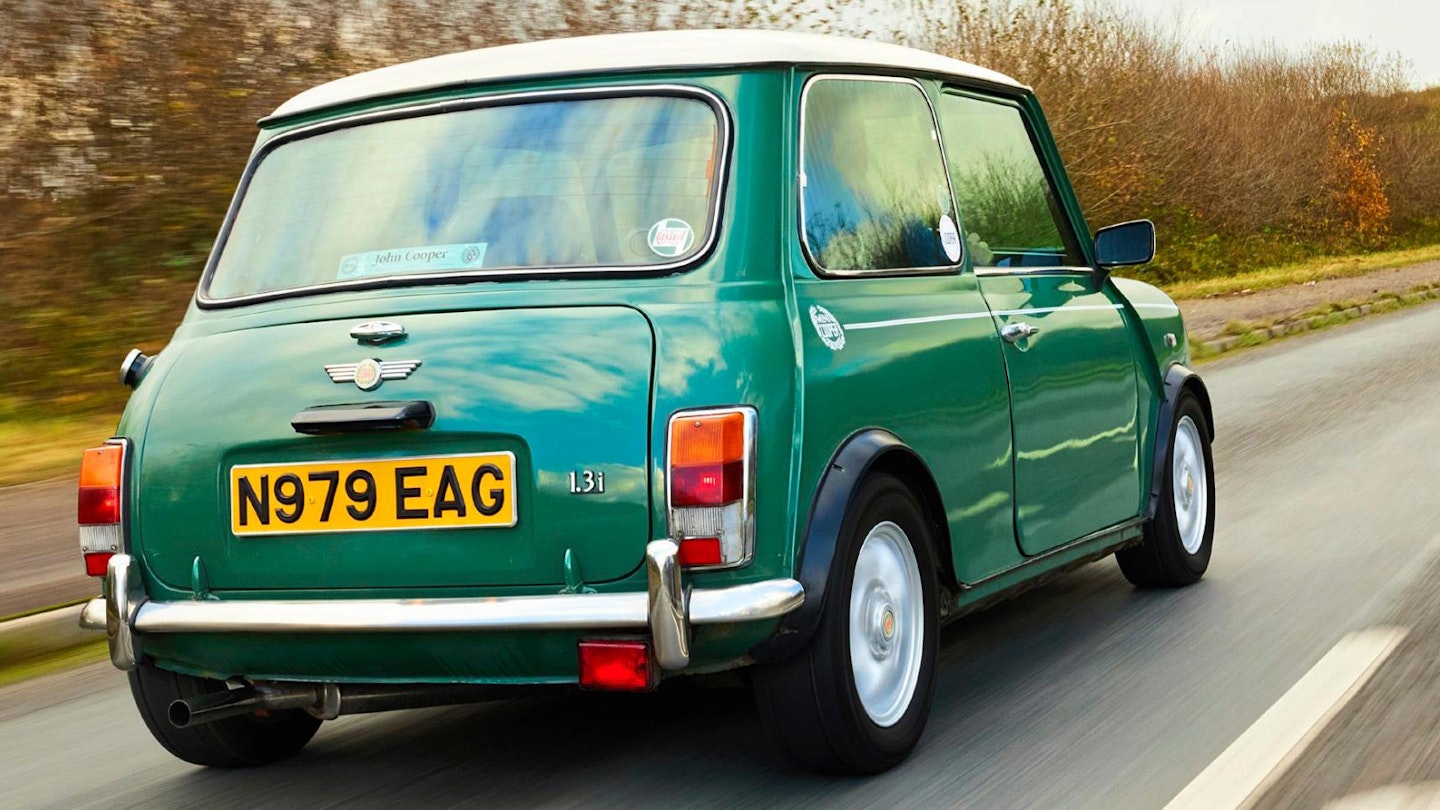
Those 12in wheels with 165/60 tyres fill the arches nicely.
TECH SPEC
Engine 1275cc/4-cyl/OHV
Power 62bhp@5700rpm
Torque 70lb ft@3900rpm
Gearbox 4-speed manual
0-60 mph 11.5sec
Top speed 92mph
Fuel economy 36.2mpg
WHAT'S IT LIKE TO DRIVE

Just look at that grin!
It's no secret that the ‘hot seat’ of any Mini is one of the greatest places to be for any petrolhead, and something that everyone with oil in their veins should experience. Having folded myself behind the wheel of Sam's car, I’m immediately struck by the lightness and tightness of this car. Everything from that rebuilt gearbox – I’m so pleased Sam persevered with it – which snicks precisely between ratios to the perky engine up-front which responds eagerly to even the lightest jab of the right foot, testament to Sam’s fastidious attitude and experience with A-series engines. The suspension feels taught and the interior is quiet and free from knocks and rattles, with perfection achieved from headlining to carpet set. While the ‘go’ is impressive, the diminutive brakes tucked behind the Cooper’s tiny 12in wheels are also sharp and responsive.
This really is an addictive driving experience, a cut above other Mini’s I’ve driven. This car is so much more than the sum of its parts and is one I really don’t want to return the keys to!
USEFUL CONTACTS
British Motor Heritage, bmh-ltd.com Mini Spares, minispares.com Paul Inch Engine Services, paulinch.co.uk
Restorer of the Year 2026
Restorer of the Year celebrates the shed heroes who, every year, produce extraordinary work breathing life back into basket cases and bringing classics that are going nowhere back to the road. We’ll scour the land to bring you the very best then, early in 2026, you get to nominate your favourite restos. From your top ten nominations our panel of experts will select the top five nominees so that you can meet the winner at the PC Classic Car and Restoration show at the NEC next March.
Subscribe to a PC Print+ Subscription today and you'll get instant digital access PLUS FREE UK delivery so you'll never miss an issue again. Check out our offers today.
